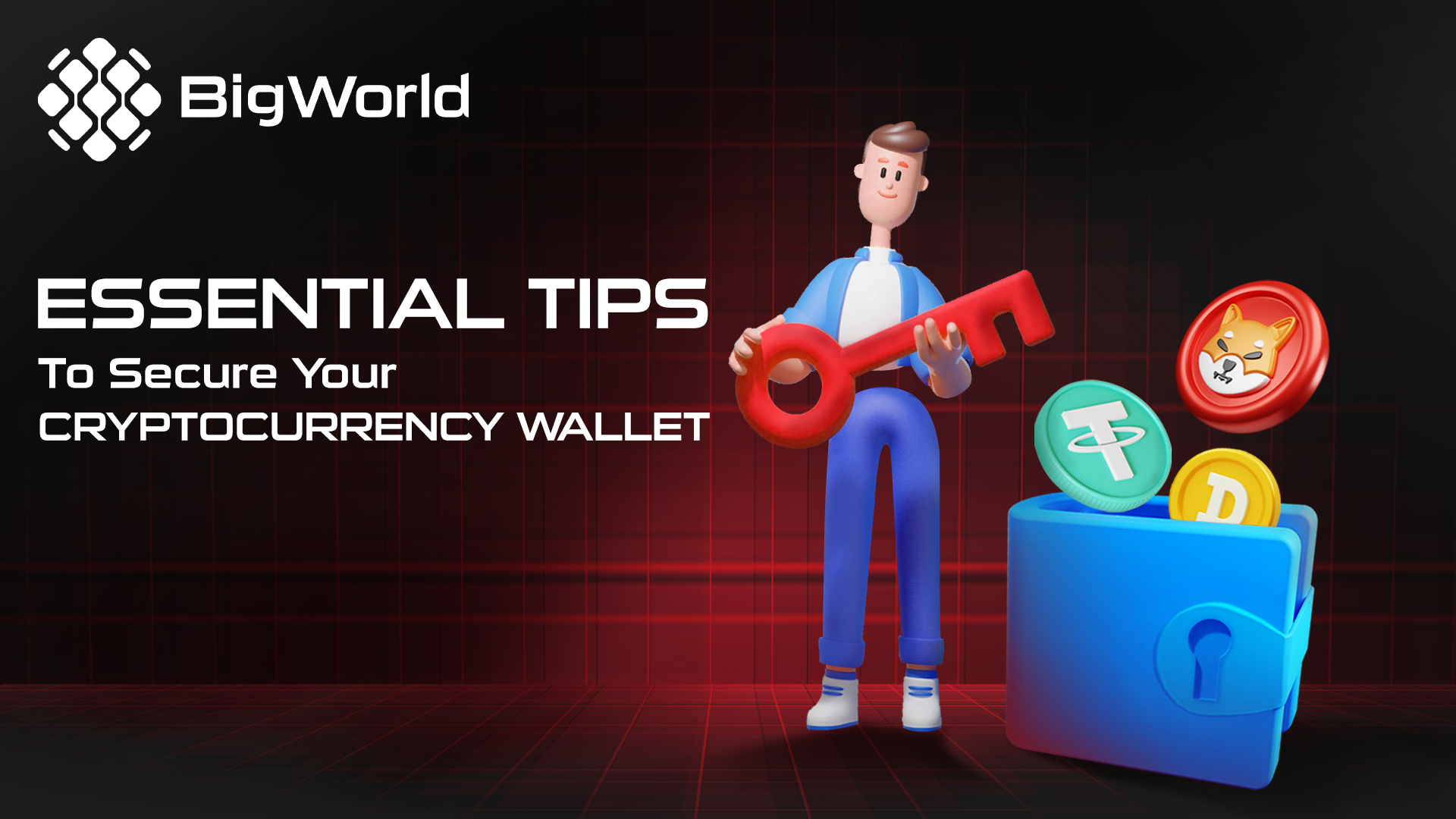Essential Tips for Safeguarding Your Cryptocurrency Wallet in 2025

Essential Tips for Safeguarding Your Cryptocurrency Wallet in 2025
As cryptocurrencies continue to gain mainstream adoption, the risks associated with fraud and cyberattacks grow alongside them. By 2022, fraud targeting older Americans through cryptocurrencies were projected to reach an alarming $1.088 billion. With the anonymity and decentralized nature of cryptocurrencies making transactions difficult to trace, cybercriminals have become increasingly adept at exploiting vulnerabilities in crypto wallets. Safeguarding your wallet is no longer just a recommendation — it’s an absolute necessity.
In this article, BigWorld explores the essential strategies to protect your crypto wallet from fraud and cyber threats.
1. What is a Cryptocurrency Wallet?

What is a Cryptocurrency Wallet?
A cryptocurrency wallet serves as a digital vault for your crypto assets. It securely stores the keys required to access, manage, and transact cryptocurrencies like Bitcoin, Ethereum, and many others on the blockchain.
Public Key: This functions like a wallet address that you can share with others to receive funds.
Private Key: Often described as your wallet’s unique “password,” this key grants full access to your funds. Keeping it confidential is critical to safeguarding your assets.
2. Common Cryptocurrency Wallet Attacks
Cybercriminals use a variety of tactics to compromise wallets and steal funds. Some of the most common threats include:
Phishing Scams: Fake websites, apps, and emails impersonate legitimate wallet providers, tricking users into revealing their private keys or login credentials.
Malware and Viruses: Malicious software can infect your devices, giving hackers access to sensitive wallet information.
Brute Force Attacks: Hackers use automated tools to guess passwords or private keys by trial and error.
Exchange Hacks: Centralized exchanges store large amounts of user funds, making them prime targets for cyberattacks that exploit security vulnerabilities.
3. Signs Your Crypto Wallet May Be Compromised
Early detection of unauthorized access is crucial. Look out for these warning signs:
Unrecognized Transactions: Check your transaction history regularly for any unfamiliar withdrawals or transfers.
Balance Discrepancies: A sudden drop in your wallet balance without any corresponding transactions could signal theft.
Login Alerts: Notifications about logins from unrecognized devices or locations may indicate a breach.
Unexplained Changes: Watch for any unexpected alterations to your wallet settings or the addition of new addresses.
Security Warnings: Alerts from your wallet provider about suspicious activities should never be ignored.
4. Proven Strategies to Secure Your Crypto Wallet
Protecting your crypto wallet requires a combination of best practices and proactive measures.
Use Strong Passwords and Two-Factor Authentication (2FA): Create unique, complex passwords for your wallet and enable 2FA to add an extra layer of protection.
Choose Reliable Wallets: Opt for reputable and well-established wallet providers. Avoid using unknown or unverified options.
Backup and Protect: Regularly back up your wallet data and store recovery phrases or private keys in secure, offline locations such as a safe or a vault.
Stay Informed About Scams: Be cautious of phishing attempts and always verify the legitimacy of messages, links, or websites. Familiarize yourself with common scam tactics.
Keep Software Updated: Ensure your wallet software is always up-to-date to benefit from the latest security patches and improvements.
5. Emerging Trends in Crypto Wallet Security

Emerging Trends in Crypto Wallet Security
Hardware Wallets: These offline devices store your private keys securely and keep them disconnected from the internet, making them far less vulnerable to hacking.
Multi-Signature Wallets: By requiring multiple approvals for transactions, multi-signature wallets provide an additional layer of security.
Biometric Authentication: Using fingerprints or facial recognition to access wallets improves both security and convenience.
Decentralized Wallet Solutions: Unlike centralized exchanges, decentralized wallets provide users with full control over their private keys, reducing the risk of large-scale hacks.
Read more: 5 Reasons Why You Need a Secure Crypto Wallet | TheBigWorld
6. Additional Tips for 2025
As the crypto landscape evolves, staying ahead of emerging threats requires vigilance and adaptability. Here are a few additional tips:
Monitor Wallet Activity Regularly: Set aside time to review your wallet’s transaction history and settings.
Diversify Storage Methods: Use a combination of hardware wallets, software wallets, and cold storage to minimize risks.
Educate Yourself Continuously: Stay informed about the latest security developments and scam techniques in the cryptocurrency space.
Limit Exposure: Only keep the funds you actively need in online wallets and store the rest in secure offline options.
7. Conclusion
Securing your cryptocurrency wallet is a fundamental step in protecting your digital assets from increasingly sophisticated threats. The decentralized and anonymous nature of cryptocurrencies may make them attractive targets for cybercriminals, but adopting proactive measures can significantly mitigate these risks.
By staying informed, implementing best practices, and leveraging advanced security technologies, you can safeguard your wallet and confidently navigate the ever-evolving world of cryptocurrencies. Whether you’re a seasoned investor or just starting out in the crypto space, taking these precautions will help ensure the safety of your holdings in 2025 and beyond.
Read more about Web 3 insights: Avatar Economy: Bigworld and Atok Collaborate to Build the Metaverse | TheBigWorld
Combating Fraud in Web3: How AI and Blockchain Build Trust | TheBigWorld


.jpg&w=2048&q=75)